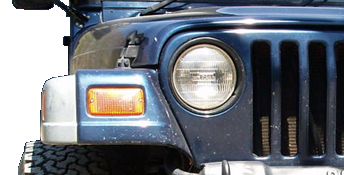Monkeynono
Well-Known Member
- Joined
- Dec 19, 2018
- Location
- Mars Hill
How is the bounce from that trampoline? I haven't seen them used in Sporting Clays before. That gotta be a fun shoot.
How is the bounce from that trampoline? I haven't seen them used in Sporting Clays before. That gotta be a fun shoot.
Again what's your excuse for acting like an adolescent as an adult, never owning your mistakes...
I know for certain you were crouched in the corner of your shop, sobbing, in the dark, when a particularly unhappy customer drove about 5 hours to pick up his parts and unfinished clapped ass chassis...
Sent from my SM-G892A using Tapatalk
That shop was 9000 square feet. It didn't have corners.
Now that I see this in drawing - really curious about the scrub radius on this with that giant hub.Using 25 degrees of inner CV angle. The pivot geometry on my new front suspension boasts 25.5 inches of wheel travel, 16.5 inches of ground clearance below the diff protection, and 35 degrees of steering angle assuming I can make the rack turn the knuckle that far.
Now that I see this in drawing - really curious about the scrub radius on this with that giant hub.
Is that a problem? On the street it would be aweful.
Have you ran your geometry on the IFS to determine the torque vs thrust based anti-values for accel and braking?
What about with inboard brakes?
What’s your roll center height difference front to rear?
I'm confused about how CV fore/aft motion is worse/different than vertical motion (which you need a LOT of), and how you're planning on keeping CV fore/aft motion from occurring with KPI/caster/anti-whatever/unequal-arm-length as the wheel moves vertically, in pitch/roll, and in steering.
Put it this way: I don't think you can constrain fore/aft motion of the CV in the way that you think you can.
I engaged in mounting inboard brakes on the D-80 but I ran into a bunch of trouble I didn't want to deal with concerning all of the surrounding space of the differential. The lengths I was gonna have to go to protect the rotors was going to ruin the front end.
I don't know the torque vs thrust based anti-values for accel and braking. Sounds interesting. I wonder how to figure that out? Kind of sounds like it has to do with shock tuning, or something along the lines of anti-squat.
I don't have the rear suspension of finished. I've been trying to get all of everything else figured out first.
Here is a torque equation. I could use a little elaboration on what I should expect to do with it. Like, after I figure out the values. What do I do with the information.
Torque - StickMan Physics
Torque is rotational force. The tire is being turned rotationally forward. There is a force in the opposite direction of the tire rotation that is upon the component that secure the tire.
Solid axles that is the housing rotating or trying to rotate the opposite direction of the tire.
On IFS some of that force is at center section onto the chassis, some of it is from knuckle and a arms onto chassis.
Thrust based is from the tire’s rolling resistance. On asphalt, this is low, so very low thrust based force or anti-force. I call them anti’s bc they are opposite to the normal force.
On sand/dirt, the rolling resistance is much higher, so the thrust based force ( and anti-) is much higher.
The aero resistance upon the tire increases at the square of ground speed. So again this increases the thrust base force (and anti).
Larger scrub radius increases the length of the lever, the thrust based forces have onto the upright, and a-arms, and then chassis.
These factors all contribute to how well an IFS system works.
I’m not doing your analysis and design, mainly bc I assume you will be paid for this “project” and I won’t be getting paid.
Further, my knowledge on this is not proprietary, so just as I have learned this, you can too. (Although, I assumed you already knew all this, being that you are designing your own IFS).
really curious about the scrub radius
I infer that's a rear LCA, judging by the orientation of the outboard monoball?
They were actually all 3 rotated perpendicular to begin with, but I felt I exceeded the angle limitations of the joint using that orientation. I had to turn them. Here is the housing. Oversized, and Heavy duty.
Trophy Truck 4130 Chromoly Uniball Cups For 1-1/2" Bore Uniballs 2" Tall 3-1/2" Outside Diameter - Kartek Off-Road
The inboard orientation (that you currently have) is very normal, and very good because you're rotating the A-arms about the axis of the monoballs. The outboard joint should likely be rotated though, there is a reason that standard ball joints are oriented the way they are; the greatest angle of joint rotation is about the axis of the monoball, plus/minus the offset from KPI and/or caster. If you've got enough angle range for steering in the orientation you have now, you'll have plenty of angle range for suspension motion if you turn the joint sideways to the normal orientation. The orientation you currently have is very common for rear suspension, because almost all of the travel is vertical, and there's no steering, so it makes for simple mounting without a steer axis.
What do you think?


